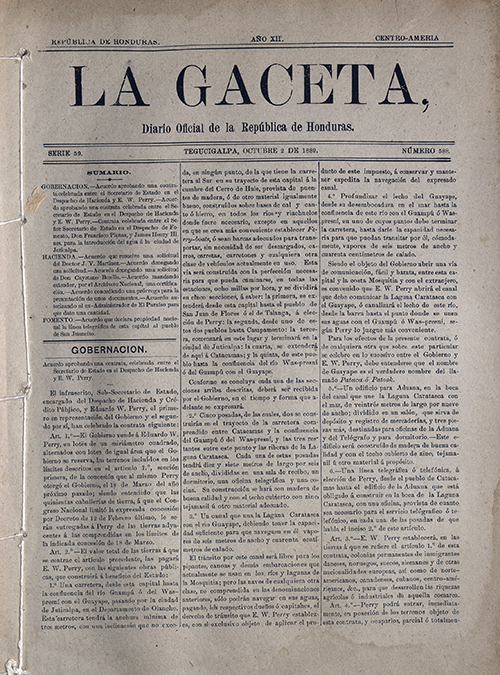Welcome to the Special Collections of the Doris Z. Stone Latin American Library and Research Center at Tulane University. The mission of the Doris Stone LAL is to acquire, preserve, and provide access to primary source materials related to Latin America and the Caribbean that support the research and teaching needs of the Tulane community, the greater New Orleans area, and Latin American scholars from around the world. There are several distinct divisions of collecting: rare books and pamphlets, printed ephemera, manuscript collections, maps, rare newspapers, and visual materials. In all, the holdings of the Doris Stone LAL Special Collections total over 6,600 linear feet of unique and rare material.
The collections together are topically wide-ranging but have special strengths in the following areas: Mesoamerican anthropology, archaeology, and history; indigenous languages of Mesoamerica; Mesoamerican codices and painted texts; early modern Spanish America, including rare printed works relating to the first encounters and later travel accounts of the New World; history, society and the arts for all periods of Central America and the Southern states of Mexico; the history of travel and tourism in Latin America; art and art history of the region.
The variety of formats and the historical vagaries shaping each of the sub-collections described below require an assortment of tools for assisting users to find materials of interest. The holdings and existing search tools for each division of the special collections is described below. See the How to Search page for more information and tips for locating Doris Stone LAL collections, at a glance. See the Quick Links, at right, for more information about visiting Tulane to consult the collections, using archives, requesting reproductions and use permissions, and searching for special collections materials in the online database.
Please contact the Curator of Special Collections, Dr. Christine Hernández, Special Collections and Engagement Librarian, Dr. Teresa Clifton, or Director, Dr. Hortensia Calvo for more information and assistance.
Quick Links
|
How to Consult The Doris Stone LAL Special Collections Duplication Policies & Services Doris Stone LAL Archival Collections Search Doris Stone LAL Digital Collections "Using Archives" Informational How to Search in ArchiveSpace (video coming soon!) |

The Doris Z. Stone Latin American Library and Research Center houses over 14,500 titles of rare printed items that include rare books, journals, newspapers, broadsides, and pamphlets.
Rare books, periodicals, and pamphlet titles are cataloged and may be identified using the catalog via Library Search.
Our Rare Book Collection includes a large number of rare first editions and titles uniquely held at Tulane. It is one of the most comprehensive in the United States for titles from the colonial and national periods of Mexico, Central America, and other countries in Latin America and the Caribbean; and is a particularly rich resource for advanced research on the history, painted books, and Amerindian cultures of central Mexico with an especially strong focus on the indigenous Maya in the regions of southern Mexico and Central America.
Strongly represented as well in the collection are chronicles of friars and priests, which provide invaluable information on Amerindian life, art, and culture in the colonial period. Vocabularies, grammars and dictionaries of Amerindian languages by early missionaries are another rich resource in the collection, as are the numerous travel accounts of early voyages to the New World and later expeditions documenting life in the Americas.
The collection originated with the purchase of the William Gates Collection in 1924. The Gates Collection contained several thousand books, including dozens of Mexican incunabula and other rare colonial imprints; hundreds of late 19th century government publications; volumes relating to the Maximilian period and to the Porfiriato in Mexico; and contemporary works and ephemera of the Mexican Revolution. Rare book holdings were later augmented by the acquisition of the Mackie Collection, which included a large number of 19th century imprints with fascinating images of South America and the Caribbean. Subsequent acquisitions have emphasized 19th and early 20th century periodicals from Mexico and other Latin American countries. The most recent additions have enhanced the collection with respect to literature, art, photography, and artist books.
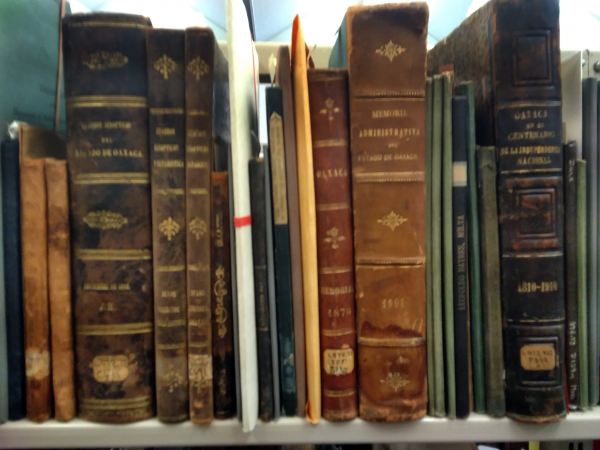
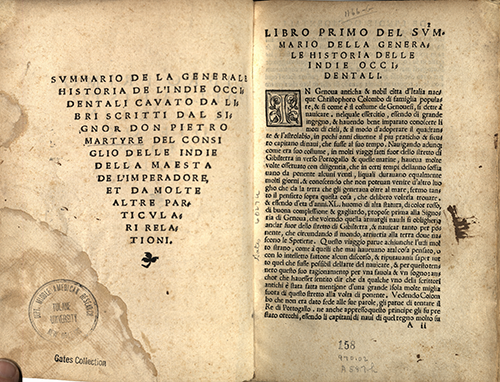
The Doris Z. Stone Latin American Library and Research Center is the repository of nearly 200 collections and collection series of manuscripts, dating from the early sixteenth-century to the present day. In all, the library holds over 6,600 linear feet of manuscripts.
The Doris Stone LAL manuscript holdings and finding aids are searchable via Tulane University's online instance of ArchiveSpace. Access the list of collections and finding aids at the following link: Manuscripts Collection Inventory.
Among the jewels of the Library’s manuscript collections is that of original Mexican painted manuscripts dating from the early colonial period, as well as rare copies of unknown, lost or damaged pictorial manuscripts and maps. In conjunction with a comprehensive collection of codex facsimiles, this collection of Mexican codices in the native tradition is one of the most important in the United States.
As was true for the Doris Stone LAL Rare Books collection, the purchase of the William Gates collection was an important source of core manuscripts for the collection. The manuscripts division continues to grow through gifts and purchases. A number of scholars have left their research collections to the Library, including José Díaz Bolio, Lewis Hanke, Fernando Horcasitas, Seymour Liebman, Ross Parmenter Donald and Martha Robertson, Merle Greene Robertson, and Mary Elizabeth Smith. Doris Stone LAL holdings also include collections of personal papers of prominent business and political figures in Latin America, like those of Erwin Paul Dieseldorff, General Rafael E. Melgar, Francisco Morazán, William Spratling, and the Chamorro Barrios family of Nicaragua. Other collections span a variety of disciplines and time periods: the letterbooks of President Joaquín Zavala Solís of Nicaragua, a collection of autograph documents of Independence leaders of the Andean republics, papers relating to Bolivian Communist parties and the death of Che Guevara, papers and compositions of Latin American musicians, including Manuel de Adalid y Gamero, Natalio Galán, Elías Barreiro, the corporate records of the Pan-American Life Insurance Group, and the Alan Boss Collection of Cuban Ephemera, to name only a few.
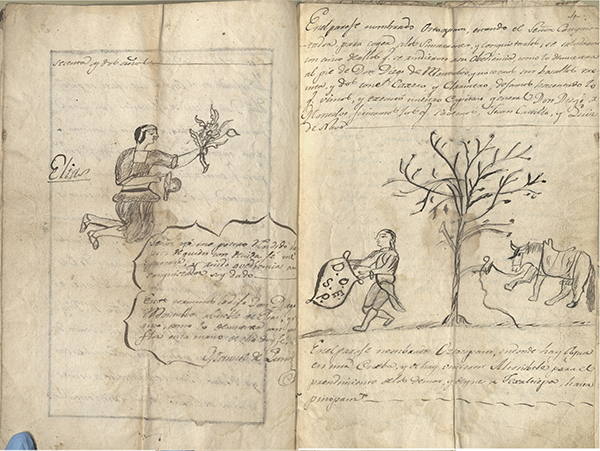
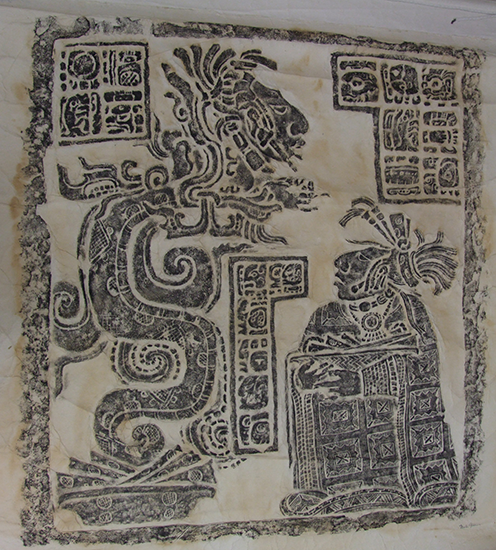
The Doris Z. Stone Latin American Library and Research Center's Image Archive, one of only a handful of such collections in the United States, holds over 172,000 individual images from virtually every country in Latin America.
Holdings in the Image Archive are searchable via Tulane University's online instance of ArchiveSpace. Access Doris Stone LAL Image Archive collection inventories using the hyperlinks below:
Photograph Collections
Photograph Albums
Small Collection Series
Individual Photograph Series
Stereograph Series
Postcard Collections
Dating from the mid-nineteenth century to the present, these images are in a variety of formats including print photographs and negatives, stereographic images, slides, glass slides and historic postcards. The images cover a wide range of topics: pre-contact art, artifacts and structures; colonial, modern and contemporary urban architecture and scenes from many cities in the region; pictorial documentation on travel through the region; landscapes; ethnological material on Amerindian villages, dress, customs and rituals; archaeological sites; haciendas in the Central Valley of Mexico; the construction of the Panama Canal; mid-19th century Mexican cartes-des-visites depicting occupationals; early 20th century Central American fruit ports; the Sandinista-Contra conflict in the 1980s; studio photos and portraits, and much more.
The collection includes original photographs and/or reproductions from such notable early photographers of Latin America including: Abel Briquet, Martín Chambi, Courret Hermanos, Antíoco Cruces and Luis Campa, Marc Ferrez, Juan Yas and José D. Noriega, Hugo Brehme, and Eadweard Muybridge. Equally notable are the collections of work from contemporary photographers like Abraham Guillén, Emilio Harth-Terré, Faustino and Julio Mayo (Hermanos Mayo), Leo Matíz, Lorry Salcedo-Mitrani, Vicki Ospina, Erika Diettes, Manuel H., and João Farkas.
Since 2003, the Doris Z. Stone Latin American Library and Research Center's photographic holdings continue to expand under the current director, Hortensia Calvo. The archive was renamed the Image Archive to reflect a variety of image formats already held in the collection as well as recently acquired materials, which include negatives, slides, glass lantern slides, stereoscopic images, postcards, rubbings, original sketches, engravings, and drawings, and is now housed together within the Doris Stone Latin American Library's Special Collections. Major acquisitions include the addition of slides and photographs that accompany the Merle Greene Robertson Collection of Maya rubbings; the numerous donations of Penny Chittim Morrill and the founding of the Sutherlund-Taxco Collection of photographs and original design drawings by William Spratling, Antonio del Castillo, Margot van Voorhies Carr and other designers associated with the Taxco silver industry; and the Chamorro Barrios Family Papers, to name a few. The library is also able to continue building this collection and publicizing its rich holdings thanks to funding provided by the Zemurray Foundation through the Doris Stone Endowment to the Doris Stone Latin American Library established in 2002, as well as the generosity co-founders Steve and Abbye Gorin who established the Abbye and Steve Gorin Endowed Fund for Photographic Materials at the Doris Stone Latin American Library in 2010.

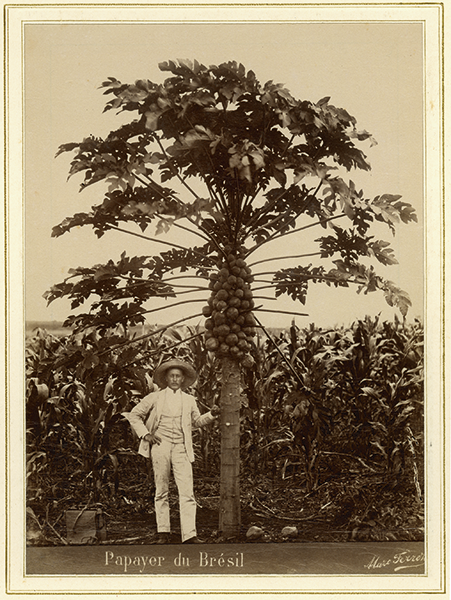
Over 75 linear feet of rare print collectibles or ephemera are available for consultation at the Doris Z. Stone Latin American Library and Research Center and cover a range of themes including travel and tourism, art and art galleries, and politics from countries across Latin America and the Caribbean.
Ephemera are a class of print collectible materials that defy a precise definition but in general, ephemera pieces are made of paper, printed (though sometimes handwritten); two-dimensional (though can be a package or a box); transient and incidental (though often imbued with importance or sentimentality that leads to it being preserved long after serving its original function or intention); and often visually attractive or unique. Ephemera can therefore appear in a variety of formats such as broadsides, brochures, flyers, posters, souvenir cards, pamphlets, invitations, certificates, menus, announcements, and ballots to name just a few examples.
The Doris Stone LAL is constantly adding material to its printed ephemera holdings. The largest is the Central American Printed Ephemera collection (CAPE) containing materials categorized by topic as either political, religious, economic, or cultural in nature. The CAPE collection is further subdivided by country of origin. Long-standing printed ephemera collections for Mexico and Cuba exist as well. The newest collections are those for countries in South America, Nicaragua, and the Caribbean.
Among Doris Stone LAL printed ephemera holdings are two thematically focused collections. Latin American Art Ephemera is a printed ephemera collection relating to Latin American art, artists, art exhibitions, and the art scene. Latin American Travel and Tourism Ephemera is a printed ephemera collection dedicated to the history and marketing of travel and tourism in the region dating as early as the 19th century.
Ephemera items and broadsides may be searched in the Tulane University Libraries instance of ArchivesSpace via the "Doris Stone LAL Special Collections" hyperlink in the Quick Links box above using collection title, country, keyword, and subject headings.
Click on the following link to access Doris Stone LAL holdings: Ephemera Collections Inventory.
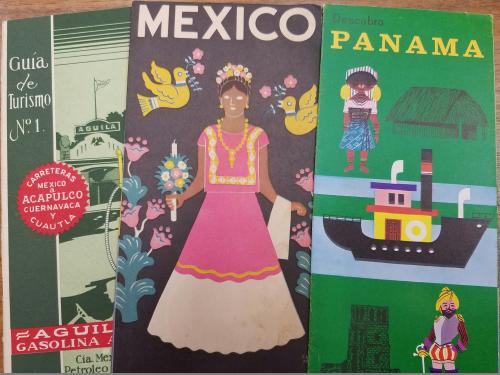

The Doris Z. Stone Latin American Library and Research Center's Maps Collection includes more than 4,000 maps and archaeological site drawings. Traditional geographical areas of strength have been Mexico, Central America, Peru, and Brazil. Most of the Doris Stone LAL historic maps are listed in MARI Publication Numbers 3 and 4 of the Middle American Research Institute available in the Reference Section of the open stacks at the Doris Z. Stone Latin American Library and Research Center. Since 2018, the Doris Stone LAL's historical map holdings have been substantially enhanced by donations from the extensive and exquisite rare maps collection of the late Joseph Rubini by the Rubini Family in his memory.
In addition to historic maps, the Library collects national and regional topographic maps of every country in Latin America, urban maps of national capitals and smaller cities in areas of particular interest, road, and tourist maps. Most of the maps in the collection are loose sheets, but there are important map holdings contained in atlases and as pull-outs in rare books.
Maps may be consulted in the special collections reading room located in the Doris Z. Stone Latin American Library and Research Center office. Request slips for the map collection are provided. Please be prepared with the title of the map, date, and call number.
Maps: Holdings (Searchable PDF document)
Maps: Most Recent Additions (Searchable PDF document)
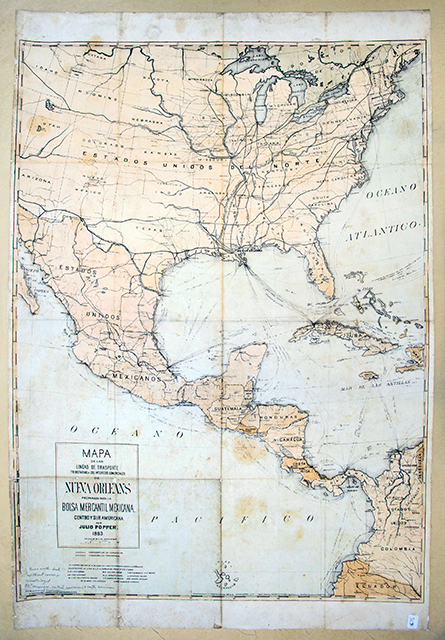
Rare Newspapers (c. 18th century-1980s)
The Doris Z. Stone Latin American Library and Research Center has extensive holdings of rare printed newspapers from 26 countries that form part of its special collections. See the Doris Stone LAL Rare Newspapers Inventory for holdings from each country. The inventory will be updated periodically as new titles are added.
Individual issues of rare newspapers and newspaper clippings may also be found as component items in manuscript and printed ephemera collections. Please contact the Curator of Special Collections, Dr. Christine Hernandez for more information and assistance.
Rare and Non-Rare newspapers are available in microformat. View the inventory of microfilm holdings HERE. For more information about how to request and consult Doris Stone LAL microfilm holdings, visit the Media Services Microforms page.
For information about searching for Non-Rare Printed Newspapers, visit our News & Newspapers Guide.
